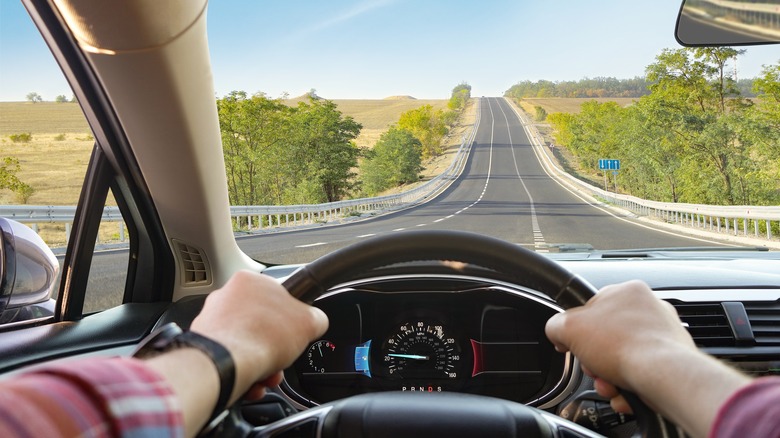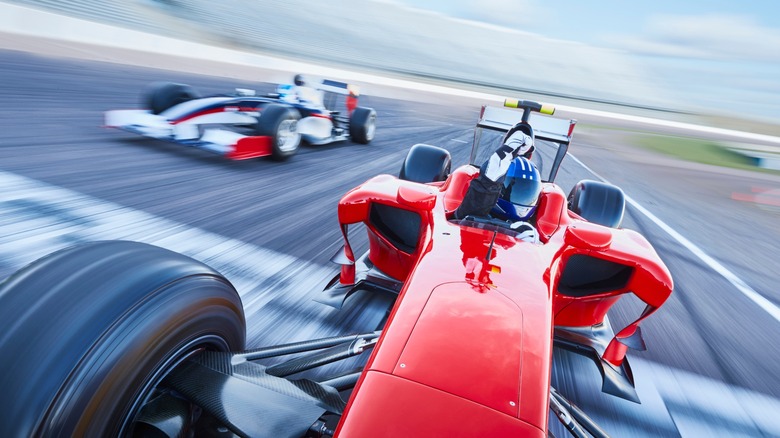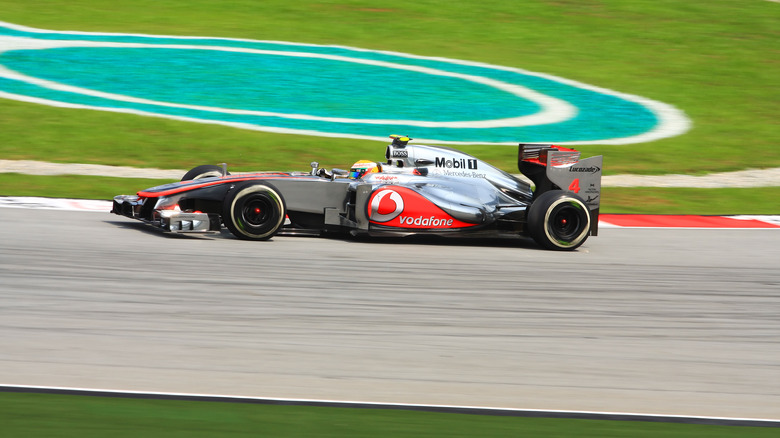How Does Horsepower Affect Your Car's Acceleration?
When it comes to a vehicle's horsepower, you're not going to be looking for the highest in every situation. The important thing isn't to get carried away by how high the numbers go on a specs sheet or speedometer, but to understand what they'll mean for you and the vehicle you're driving. Horsepower has a considerable effect on many aspects of a vehicle, including acceleration. One important thing to note is that in terms of acceleration, a lower number is often actually preferred: The more that can be shaved off that 0-60 (one of the most bandied-about yardsticks of a given car's acceleration), after all, the better. What isn't always clear, though, is the specific relationship between this value and horsepower.
Horsepower is calculated in such a way as to express how formidable an engine is, in terms of the amount of work it can perform in a specific amount of time. Naturally, the ability to work faster is an enormous boon, because if everything else is — strictly hypothetically — equal, you'd expect the vehicle to be gathering speed faster and, hopefully, more efficiently. Higher horsepower for a vehicle, then, can certainly help it to accelerate more quickly. There's a big difference, though, between horsepower and torque. As Kelley Blue Book's Jason Fogelson puts it, "Torque is more important than horsepower when you first accelerate. Horsepower is more important than torque when you want to maintain peak performance." Torque translates to the amount of force generated by the hard-working pistons down there in the engine, and is one of the primary factors in, in particular, getting a car started from park.
Horsepower and torque aren't all there is to acceleration
Horsepower is among the most eye-catching values that a car has to offer, but isn't one that always has to be the highest priority. Similarly, horsepower and torque — there are some prominent differences between the two – aren't the only factors that influence how quickly a vehicle can accelerate. One of the most prominent examples is that of weight. Typically, vehicles designed for racing will be sleek, aerodynamic, and, crucially, designed to minimize how much they weigh.
The regulations for Formula 1 cars are often amended, and the goal is often to make them smaller and lighter. When the 2026 regulations were announced in June 2024, Nikolas Tombazis, FIA Single Seater Technical Director, explained that the concept behind them was to develop "cars that are light, supremely fast and agile ... we worked towards what we called a 'nimble car' concept." The minimum weight of the cars was cut down to approximately 1693 lbs, and part of the reason for this is that lighter vehicles typically accelerate faster, because of the way that forces act upon them. Other factors such as the transmission and its performance will also influence the acceleration of a vehicle, with this component being pivotal to the action of switching gears and relaying that all-important power, which is in turn key to efficient driving.
Higher horsepower doesn't mean higher acceleration
Those ludicrously fast Formula 1 cars, granted, are a very unique breed of vehicle compared to conventional cars. Nonetheless, they're bound by some of the same logic that impacts so many of them. Another example is that, regardless of the horsepower and acceleration they may be able to reach at max, they're fighting against physics and the very surface on which they're racing in order to do so. Aside from an aerodynamic body, such vehicles need optimal grip on the track from their tires, in order to perform at their best. Drivers expertly manage accelerating and decelerating over the course of a race, and inefficiency in these processes can cost valuable time.
The mechanical grip of tires keeps the vehicle in contact with and in tune with the road, increasing acceleration and other aspects of control. Impressive horsepower numbers won't make up for any loss in these departments if traction is poor. Indeed, they might even prove a liability, because more horses to tame can make for a more challenging vehicle to take charge of should there be any such issues. Ultimately, horsepower is just one element of a broad range of influences on a vehicle's acceleration. This is true both when considering maximum possible specs and real-world performance in different situations.


